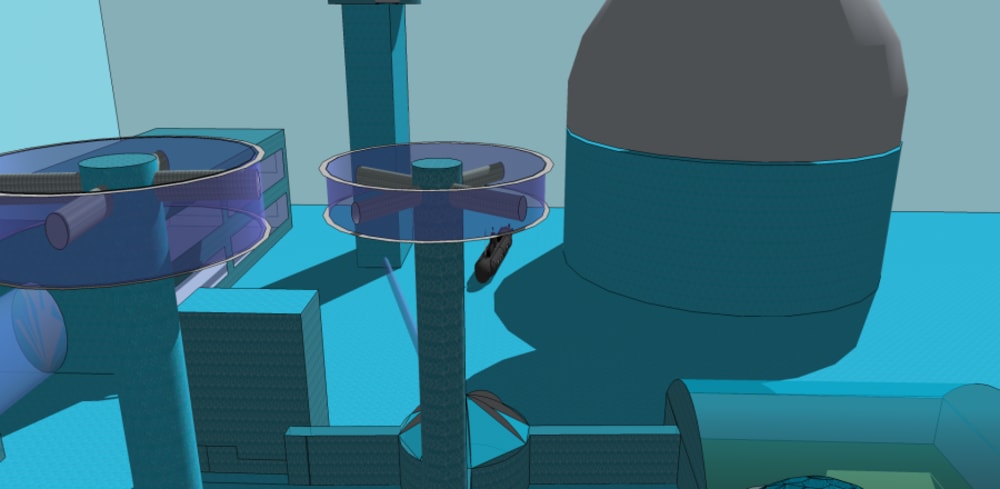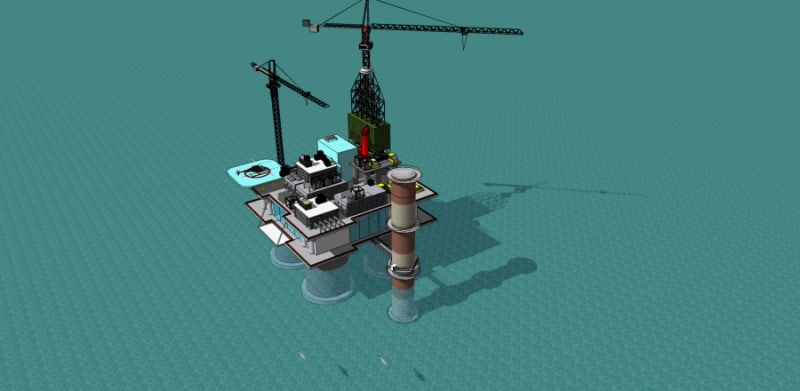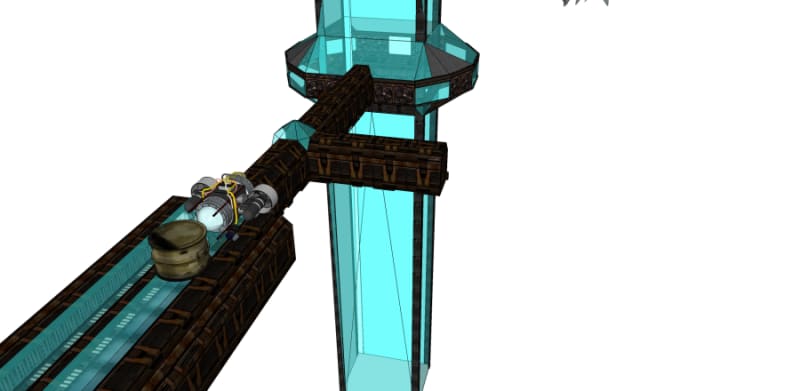We all know the disasters generated by nuclear power plants like the Chernobyl Disaster or Fukushima recently.
Yet people stress the fact the plants are safe but by recent standards they are not 100% fault proof.
What I propose then is to build a nuclear power plant under water! The system is composed of an underwater reactor built around a refurbished nuclear submarine, contained in an underwater dome (see Figure 2) and connected to an offshore oil rig (see Figure 1).
The nuclear reactor is hosted in a dome that has a sliding "hat" mounted on hydraulic pistons. The hat acts like a pressure pan: in case of a nuclear melt down, the pressure generated by the core will lift the hat thus allowing an immediate flow of water required the cool down process. With proper calculations the safety can act mechanically even in case of a power down or seismic event. Valves and pressure will guarantee that water flows only inward. An exahust pipe (see red tower in Figure 1) will reach the offshore platform for the condensation of the eventual radioactive steam produced by the cool down process in such a way that will not reach the atmosphere.
I have calculated that for a common submarine producing few hundred megawatts the dome must be placed at a depth of about 500 meters. There is an ideal condition (to be calculated) for the dimension of the dome that vary with depth (atmosphers), temperature and nuclear plant that has to be calculated on simulations.
The role of the off-shore platform is to supervise the dome via automatic systems (fiber cable connection with the dome) as well as robots that operate both inside the nuclear dome as well as outside.
Pros:
The plant is intrinsically safe because remotely operated by robots and supervised by humans.
Tsunami waves travel on the water surface thus not constituting a danger. The dome has to been built obviously far away from seismic areas like the St. Andreas Fault.
The nuclear waste can be easy disposed by using ROVS (see Figure 3) to place nuclear sealed containers to the nearest tectonic plate subduction layer.
Cons:
If radioactive water leaks in the ocean due to a destruction of the exahust wipie there will be contamination. To avoid this risk the plant should be built in a zone with localised currents to prevent poisoning of the habitat and local echosystem.
There are still some unresolved issues with nuclear disposal like the problem of construction of shaft walls that will withstand the weight of all the earth above. The same problem is encountered when constructing a ROV to descend to the ocean floor. While the ocean depth is a maximum of about 6 miles, the tectonic plate depth is as much as 50 miles. Finally, there are the construction strength problem differences between an enclosed submerged module in the ocean and the side wall problems in a shaft through which nuclear waste canisters are to be lowered.
Like this entry?
-
About the Entrant
- Name:Paolo Di Prodi
- Type of entry:individual
- Software used for this entry:Google Sketchup
- Patent status:none








